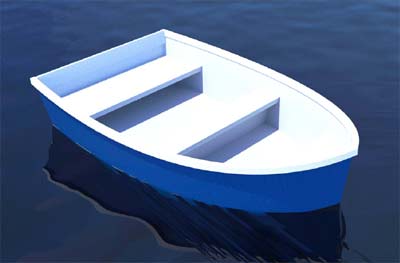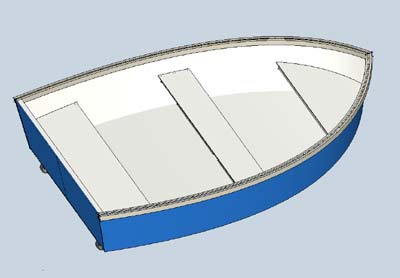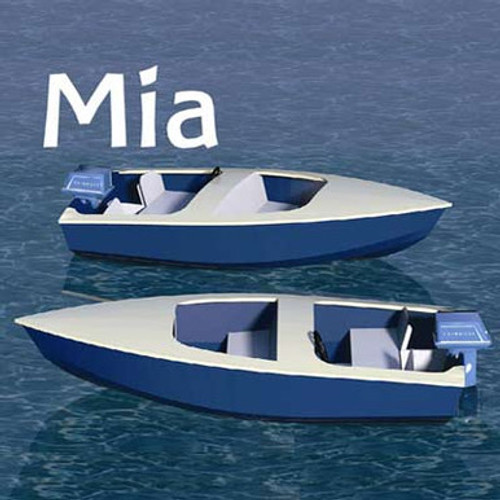Free Study Plans Download - Click HERE
'Trixie' began as an idea for a small and simple to build plywood tender, able to get out to a mooring with two or three on board, that was very light, incorporated wheels to enable transport to the slipway, was designed to provide the maximum space from two sheets of 1/4" plywood, and could be powered by oars, a small outboard or sail.
Simplicity and economy have been my main design criteria. The side panels have parallel long edges, 8' long - this ensures the least amount of wastage and makes for easy marking out and cutting. The bottom panel is 4' wide and of a length to suit the side panels. This produces a hull with a maximum beam of 4'6" and a length of 7'2". With proportions like this, she should be capable of carrying three people and provisions to the mother vessel.
On the bottom are two skegs, each of which incorporate a 4" diameter plastic wheel. The intention here is to facilitate pulling the boat across a car park or road, and down a slipway. I doubt that they'd cope on sandy beaches or muddy tracks! Other options are to omit the wheels, or provide one central skeg (minus the wheel), or omit the skegs altogether.

She's not going to win on the speed stakes - but I think that she looks cute!
Anyone with a basic knowledge of woodworking should be able to make this boat.
Whilst this manual sets out the construction sequence in detail, the builder should have a basic knowledge of, and ability in, working with wood and epoxy resins and glass fiber.
Before buying materials, or starting to build this boat please read and familiarize yourself with the drawings and construction manual. Bear in mind that the build sequence and method of construction can be varied to suit your preference.
Specifications
Length 7' 2"
Beam 4' 6"
Bare Hull Weight 70 lbs
Power Requirement:
Oars
2hp outboard
Small electric outboard
Sail

List of Materials
1/4" x 4' x 8' - Marine Plywood
2 sheets
3/4" x 1 1/2" timber for gunwales, inwales and seat supports
about 50'
1 1/2" x 1 1/2" timber for seat supports at side panels
about 7'
5" x 1 1/2" timber for the skegs
about 4'
3" glass tape
about 50'
About 3 yards of glass cloth to cover the hull bottom and overlap
About 1 gallon of epoxy resin
About 2 pounds of resin thickening powder
2 x 4" diameter plastic wheels, plus associated hardware as shown on the drawings






